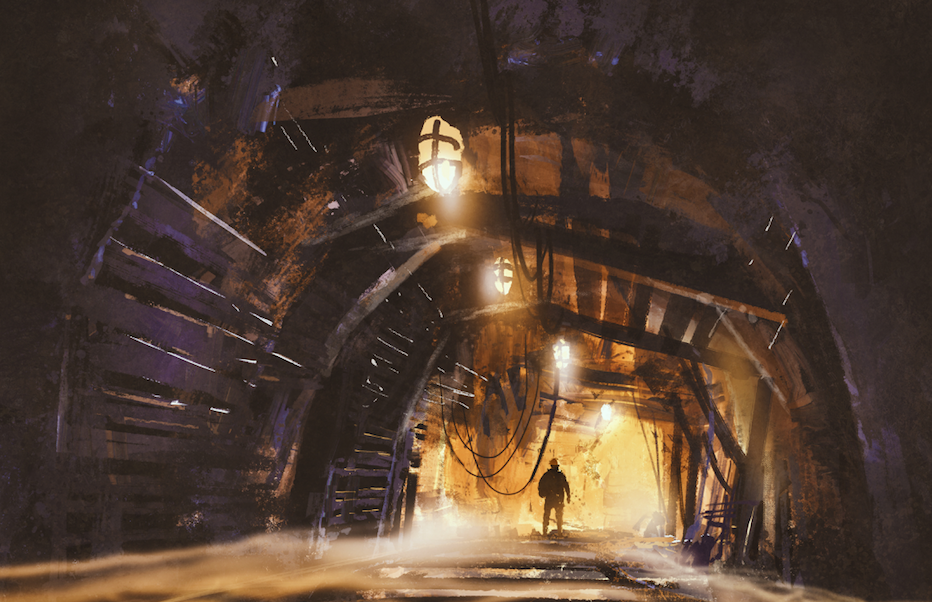Six steps for reducing risk and roadblocks in digital initiatives

There’s no question that the mine of the future is digital – with connectivity, data and digitalized processes driving results like greater productivity and enhanced safety.
The more pressing question is, when will this future arrive for you? And when it does, will it be too late?
Today, mining lags behind other industries when it comes to implementing digital initiatives. A recent Rockwell Automation survey found that only one in 10 mine executives said they have implemented at least one digital transformation initiative – compared to more than one in five in other industries.
Mines present no shortage of challenges for digital transformation – from remote and harsh locations to technical and security challenges to the new skills that are needed in the connected mine. But with the right strategy, you can create digital initiatives that are meaningful to your business and manageable in their implementation.
Roadblocks slow the journey
For the last two years, digital effectiveness has been one of the top three business risks for mining and metals companies, according to EY. But a wide range of factors can slow or stymie your journey to the connected mine and your ability to capture value from it.
It could be that your digital strategy doesn’t support your overall business strategy or specific market needs. When this happens, you can become too focused on the technology itself and not on what the technology should be doing: solving your business problems.
Equipping your workforce with the right skills is another challenge. Digital technologies can redefine roles in your mines and require entirely new types of workers. At the same time, just finding workers to fill skilled positions can be difficult, as experienced workers retire and create an industry-wide skills gap.
You may also struggle with deploying new technology. For example, if you develop custom software in-house, you may find it’s difficult to maintain and expand across your operations.
A rigorously developed strategy can help guide your digital transformation, so you stay focused on achieving better business results rather than solving problems along the way.
Achieving smarter mining through digital transformation is a journey. And that journey requires a pragmatic strategy with six key steps:
Conduct an operational assessment
You may have a vision for where you want your mining operations to one day be in terms of connectivity, analytics and production capabilities. But just as important as knowing where you want to be tomorrow is knowing where you are today.
An operational assessment will help you understand the current status of your operations and the gap between the current status and the desired results. The assessment looks at how your operations run and the full suite of IT and production technologies that are used to keep it running.
Verify corporate alignment
Digital transformation isn’t about changing your technology infrastructure. It’s about changing your business to improve things like safety and environmental performance, operating efficiency and your bottom line.
This is why your digital strategy must align with your corporate strategy – and is ideally part of the corporate strategy. First, define your business vision as well as the strategy and objectives you have for bringing that vision to life. Then you can develop a digital strategy that supports these efforts.
Build a business case
Each digital initiative should have its own business case. And each business case should clearly define ROI and how a new technology will address a current problem or challenge.
Common business cases in mining include optimizing equipment usage to reduce operating costs, anticipating equipment failures to reduce or avoid downtime, and using greater connectivity and mine visibility to help protect people.
Define your business architecture
Once you’ve defined your business cases, you can start turning them into actionable objectives. The first thing you need to do as part of this process is define your enterprise in terms of governance, people, processes, technology, partnerships, strategic goals and capabilities. This assessment shows how the organization works today and stands as a reference point to how it will change as a result of digital initiatives. An enterprise-wide approach will prevent the creation of isolated initiatives or “pet projects” that cannot be applied in other areas or expanded.
Specify a Technical Architecture Only now – after you’ve identified your business problems, made cases for solving them and outlined the business architecture that you’ll solve them in – can you define your technical requirements and products.
There are some crucial decisions to make at this stage. For example, proven and scalable digital solutions can be less risky than homegrown solutions, because they can expand over time and support multiple initiatives. Also, some digital solutions like advanced analytics platforms embed machine learning at the device level. This can help you achieve outcomes like better mine visibility with less reliance on hard-to-find data scientists.
Develop a digital roadmap
Finally, you can create a roadmap for implementation. This involves not only charting a course for when and where you’ll implement each of your digital initiatives but also how you’ll sustain them and continuously improve results over time.
As you plan your initiatives, remember that this is a journey. Everything doesn’t need to happen at once. It may make the most sense, for example, to implement your initiatives incrementally, with each new initiative helping fund the next.
The benefit of experience
This six-step strategy can help keep your digital initiatives focused and moving through careful analysis, planning and understanding of your business needs. But there may still be aspects of your digital transformation where you need help.
You may not have experience, for example, in areas like integrating siloed systems or standardizing data. Or you may struggle to find time and people internally to see your transformation through.
That’s why the right partners are essential. They can bring valuable expertise from other digital transformation projects to help you identify and build business cases for your digital initiatives. They can also help you get the most value from concepts that are still new to most mines, like digital twins, predictive analytics and connected workers. And they can help apply best security practices to protect people, processes and intellectual property from cyber threats.
With the right strategy and partners, you can find the success in your digital initiatives that so many others in mining are still searching for and set a new bar for what’s possible in your operations.
(Jeff Botsch is consulting services manager: Mining, Metals & Cement at Rockwell Automation)
More News
Is Basel III setting up a new gold-backed monetary system?
April 20, 2025 | 08:22 am
China’s export controls are curbing critical mineral shipments to the world
April 20, 2025 | 08:15 am
{{ commodity.name }}
{{ post.title }}
{{ post.date }}




Comments